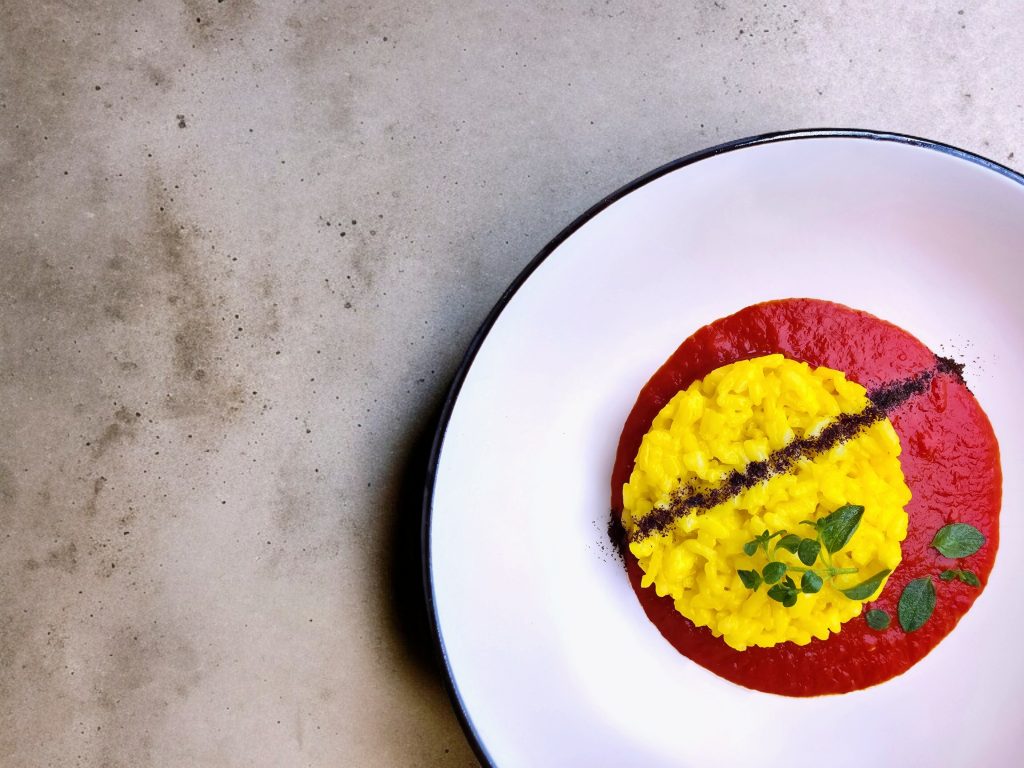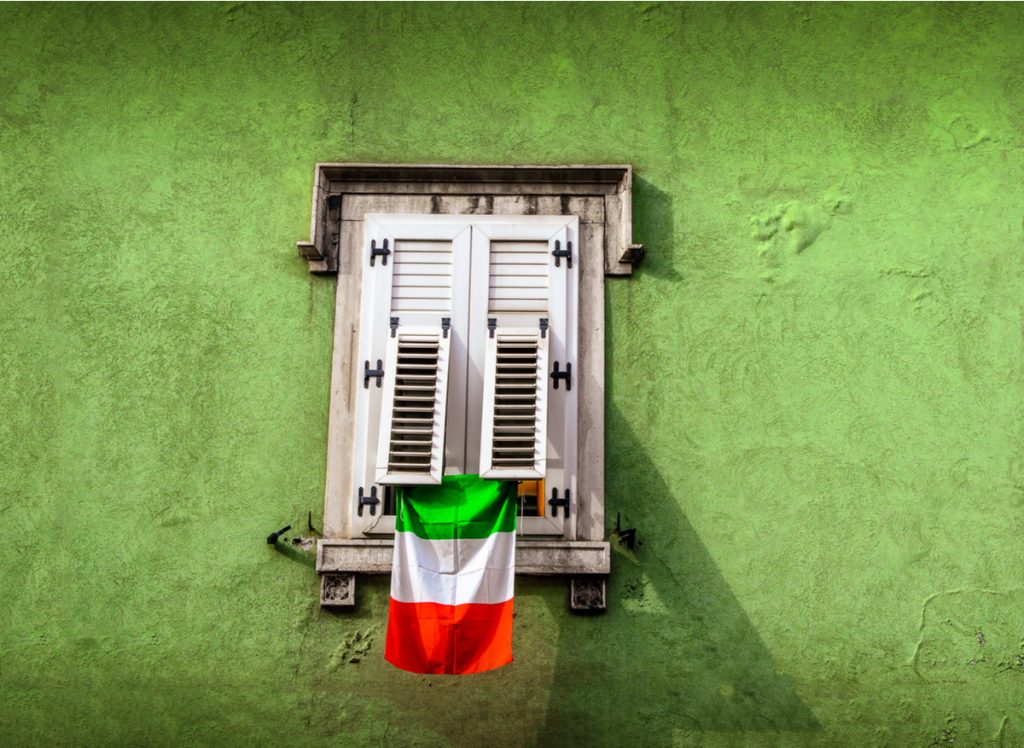Risotto allo Zafferano : A dish that tells the story of a united Italy through three territories, three ingredients, one vision.
Some recipes aren’t born in kitchens. They take shape in village squares, in folk songs, in dusty roads, and in the dreams of visionary men. In 1860, Giuseppe Garibaldi and I Mille (Expedition of the Thousand) marched from Sicily northward, uniting peoples, dialects—and why not?—flavors.

My mind wanders to that legendary journey, made of sacrifice but also of encounters. Italy, as we know, was built not only with battles but around tables: shared bread, poured wine, foraged greens along the way.
This risotto is born from that spirit. A dish that tells Italy’s story through color, blending the nobility of the North with the generosity of the South. Three elements, three symbols:
Saffron from Milan: precious, bold, vibrant.
Roasted peppers from the Mezzogiorno: sweet and fiery like the land.
Coffee dust: colonial memory and daily ritual, bitter and deep as certain memories.
It’s a gourmet dish that stirs the eyes before it reaches the palate.
Italian unity, a unity of flavors
This plate intertwines symbolic ingredients and hidden histories. Saffron entered Milanese cuisine in medieval times but became iconic with ris giald (yellow risotto) in the 18th century. Peppers arrived from the Americas in the 1500s and were quickly embraced in Southern Italy, especially in Calabria, Basilicata, and Sicily. Coffee fueled the minds of the Risorgimento (Italy’s 19th-century unification movement): think of the literary cafés of Turin, Rome, and Naples—workshops of revolutionary ideas.
Bringing these three together is a gastronomic narrative. A geography of flavor crossing Italy vertically—and through time. This dish may never have existed before, but it could easily have been born around a campfire, with Garibaldi sipping black coffee and staring at the horizon.
Modern Italian cuisine: where beauty meets memory
Today, modern Italian cuisine offers more than flavor—it seeks emotion, storytelling, and visual appeal. This recipe aims to capture the evolving soul of a people, using contemporary techniques and refined but unpretentious plating.
The creamy saffron risotto sits atop a base of roasted red pepper cream, balancing sweetness with acidity. A light dusting of fine coffee powder finishes the dish like a shadow, like an echo from the past.
Recipe: Risotto allo Zafferano, Roasted Pepper Cream, and Coffee Dust
Serves 2

For the risotto:
⅔ cup Carnaroli rice (160 g)
10–12 saffron threads
½ shallot, finely chopped
Vegetable broth, as needed
3 tablespoons cold butter (40 g)
2 tablespoons grated Parmigiano Reggiano (20 g)
Salt, to taste
For the roasted pepper cream:
2 red bell peppers
Extra virgin olive oil
Salt and pepper
Smoked paprika
To finish:
Finely ground toasted Arabica coffee
Microgreens or sprouts
Instructions:
- Soak the saffron threads in 2 tablespoons of hot broth and let infuse for at least 30 minutes.
- Roast the bell peppers at 400°F (200°C) for about 30 minutes until the skins blacken and peel away. Peel, deseed, and blend them with olive oil, salt, pepper, and a pinch of smoked paprika. Strain for a smooth cream.
- Toast the rice dry for one minute, add shallots, deglaze with a little broth, and continue cooking, adding broth one ladle at a time.
- Halfway through, add the filtered saffron infusion. Cook until creamy and al dente, about 16–18 minutes total.
- Off the heat, stir in butter and cheese to finish. Adjust salt.
- Plate with a spoonful of pepper cream on the bottom. Spoon risotto on top. Dust lightly with coffee through a fine sieve. Garnish with a drizzle of olive oil and microgreens.
Wine pairing suggestion
Etna’s Nerello Mascalese—mineral, elegant, and balsamic. It beautifully echoes the saffron’s aroma, the pepper’s sweetness, and the earthy depth of the coffee finish.
About Italy’s National Days

While this recipe is inspired by the Risorgimento and the journey of Garibaldi and I Mille, it’s worth noting two key national commemorations:
- March 17 is recognized as Giornata dell’Unità Nazionale (National Unity Day), marking the proclamation of the Kingdom of Italy in 1861 following the unification movement.
- June 2 is Festa della Repubblica (Republic Day), a national holiday commemorating the 1946 referendum that abolished the monarchy and established the modern Italian Republic.
Both dates reflect different chapters in Italy’s evolving identity—one born of revolution, the other of rebirth.


